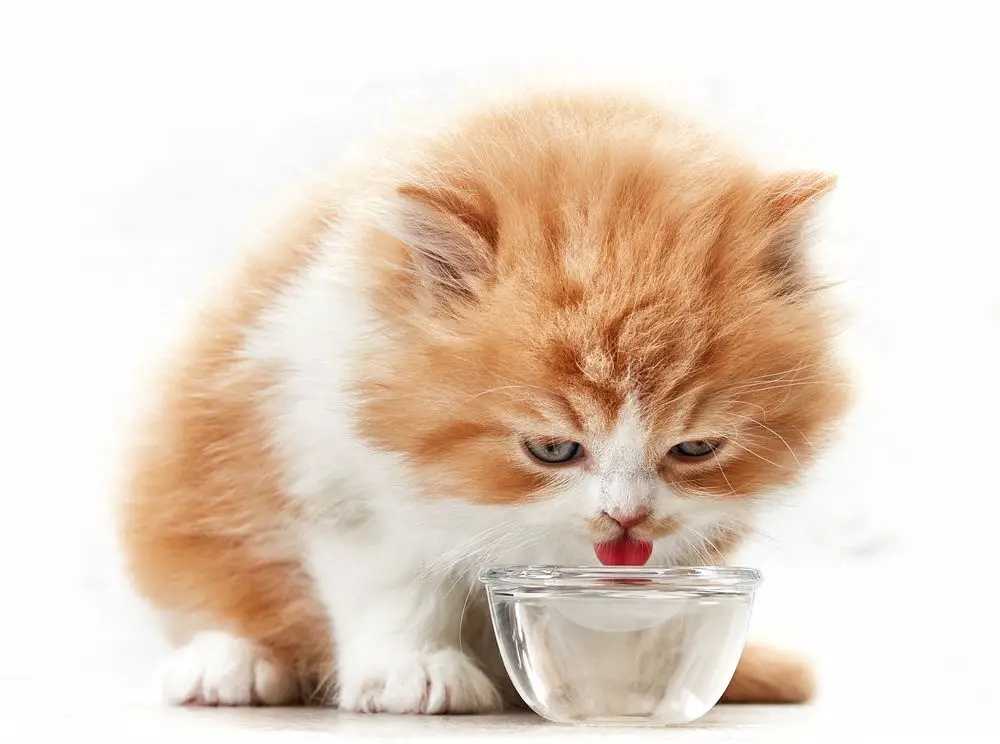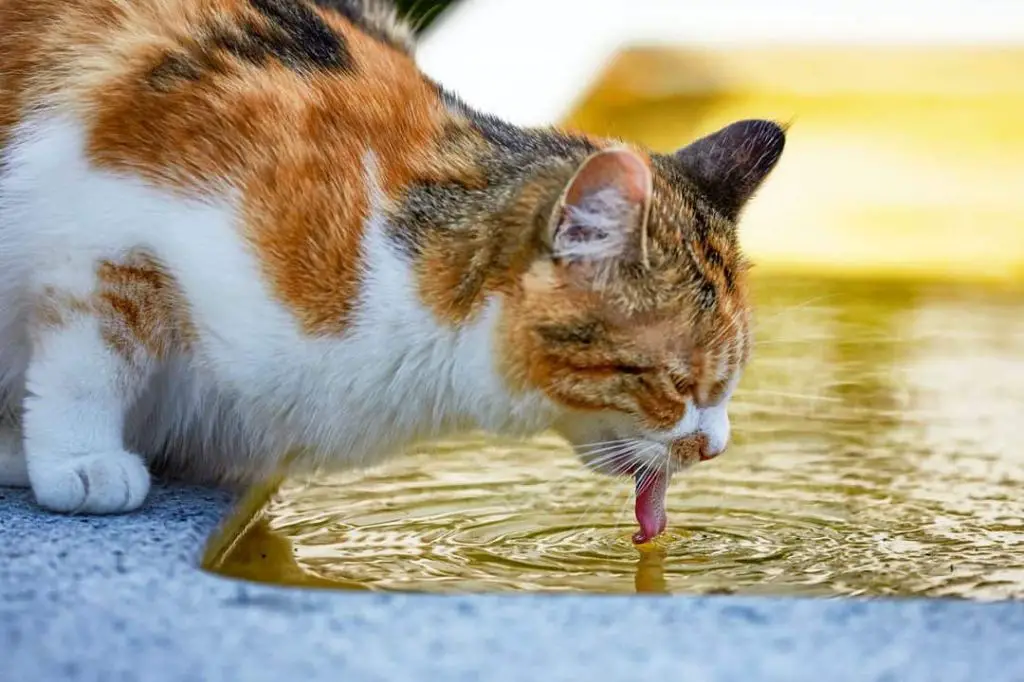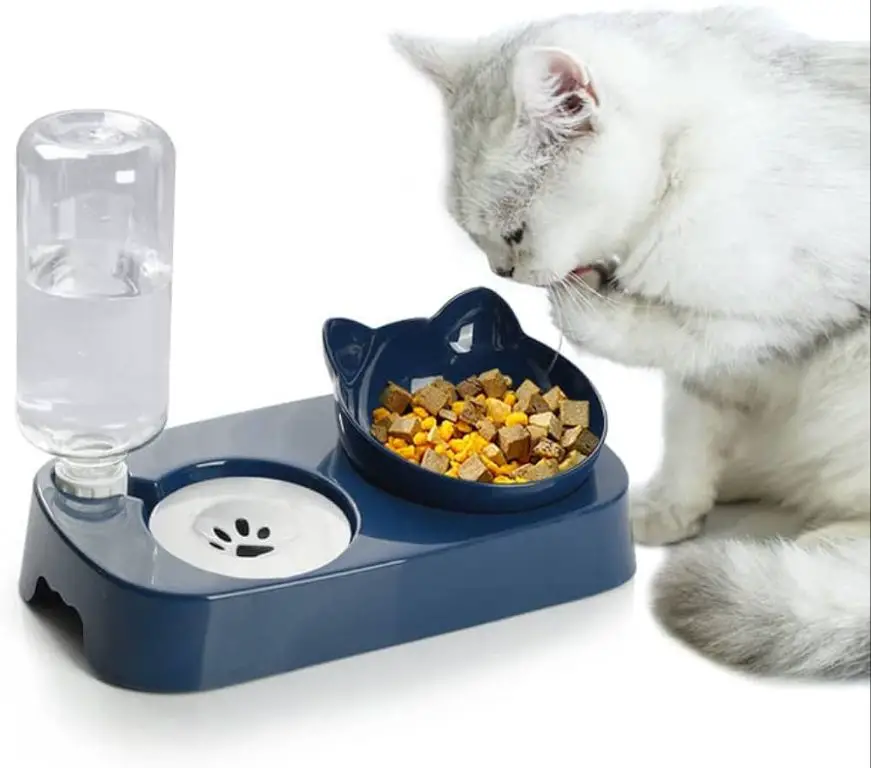Cats have evolved some unique drinking behaviors compared to other common household pets like dogs. While a dog will simply lap up water with its tongue like a spoon, cats have a more complex and intriguing method for drinking. Their specialized techniques allow cats to take in more water with each lap, avoid wetting their whiskers, and drink from shallow water sources. Understanding the interesting physics behind a cat’s drinking habits reveals the elegant engineering of feline anatomy. This article will explore how and why cats drink the way they do.
Cats lap up water so quickly that it’s difficult for the naked eye to analyze their drinking process. However, with the use of high-speed photography, scientists have been able to break down the steps. Cats have developed the perfect technique to draw liquid into their mouths with each lap.
Lap Drinking
Cats lap water up into their mouths with their tongues. This is an instinctual behavior passed down from their wild ancestors. Studies have shown that cats use the tip of their tongue to flick water up into the air in a column. As this column of water rises, the cat opens its mouth slightly and the water lands inside (1). This allows cats to lap water at a incredibly fast speed – domestic cats lap at a frequency around 4 times per second (2). Their rough tongues are perfectly adapted to grab onto the water surface and flick it upwards thanks to tiny backward-facing spines called filiform papillae.

[1: https://www.npr.org/2010/11/11/131241860/pet-physics-the-uncanny-lapping-of-cats]
[2: https://news.mit.edu/2010/cat-lapping-1112]
Slightly Open Mouth
Cats keep their mouths slightly open when drinking water. This allows them to lap the water more efficiently. According to experts, this “slightly open mouth” technique helps cats better form their tongue into a ladle shape to scoop up water with each lap 1. By keeping their mouths open rather than clenched shut, cats can lap up more water, and at a faster pace. The slightly open mouth may only be open a centimeter or so, but this small gap makes a big difference in allowing cats to drink rapidly and efficiently.
Curled Tongue
A cat’s tongue is rough and curlable, perfect for lapping. The tip of the tongue scoops while the base curls to create a ladle shape. As The High-Tech Tongue of a Cat explains, “As for drinking, a cat has no ability to close its lips and create suction, and its tongues are too small to “scoop” water into its mouths. Instead, they lap liquid up into their mouths with the curlable, ladle-shaped tips of their tongues.” This ladle shape allows cats to curl the underside of their tongue downward and quickly scoop water up into their mouths.
Fast Drinking Speed
Cats have a very fast drinking method that allows them to ingest water rapidly. According to researchers from MIT who studied the physics of cats drinking, cats can lap water at a speed of about 4 laps per second (MIT, NPR). This rapid lapping speed is much faster than the rate at which dogs lap up water. The unique way cats curl their tongues enables them to quickly draw water up into their mouths in a column with each lap.
This fast drinking method allows cats to ingest water rapidly when they are thirsty. Cats typically do not sip water slowly like humans do. Instead, they lap up water in quick bursts of speed. Their fast lapping allows them to take in a significant amount of water in a short period of time.

Avoiding Whisker Fatigue
Cats have highly sensitive whiskers that provide important sensory information about their environment. When a cat’s whiskers brush against the sides of a bowl while eating or drinking, it can cause stress and discomfort known as whisker fatigue. Whisker fatigue often deters cats from eating or drinking enough, which is detrimental to their health.
To avoid whisker fatigue, it’s recommended to choose wide, shallow bowls that provide enough clearance for whiskers. Bowls specifically designed to prevent whisker fatigue have a wide diameter and low sides. This allows cats to eat and drink comfortably without excessive whisker contact.
Providing proper bowls can greatly reduce whisker stress and ensure your cat remains properly hydrated. Select bowls that are wider than your cat’s head and don’t force them to immerse their whiskers too far. This allows cats to lap water efficiently while avoiding fatigue.
Preference for Fresh Water
Cats tend to prefer fresh, flowing water over standing water. According to Treehugger, cats are very sensitive to taste and will avoid drinking water that has been sitting out too long. Stagnant water lacks oxygenation and can start to grow bacteria, causing it to taste and smell unappealing to cats.
This is why many cats are drawn to running water sources like faucets or fountains. The movement oxygenates the water, keeping it tasting and smelling fresh. Cats also seem to find the flowing, dripping motion of running water intriguing. It activates their natural hunting instincts, even if they aren’t actually trying to catch the water. The sound of running water may also get a cat’s attention more easily than still water in a bowl.
To keep your cat hydrated, try using a fountain or filtered water dish to provide them with fresher tasting water than what accumulates in a stagnant bowl. Refilling their water frequently with cool, fresh water can also make it more enticing for finicky felines. Locating multiple water sources around your home provides more opportunities for your cat to drink. Ultimately, providing fresh, appealing water will encourage better hydration.
Fountains and Filters
Cats generally prefer fresh, flowing water over stagnant water. This is why many cat owners invest in a cat fountain or water dispenser. Cat fountains provide continuously circulating water, which helps encourage cats to drink more. The moving water also aerates the water with oxygen, which makes it more appealing to cats.
Some of the best cat water fountains recommended by veterinarians and experts include the Catit Flower Fountain, the PetSafe Drinkwell Pagoda Fountain, and the Pioneer Pet Raindrop Fountain [1]. These fountains hold several liters of water and use built-in filtration systems to remove impurities and keep the water fresh. Replaceable carbon filters help remove bad tastes and odors from tap water.

By providing a constantly circulating supply of filtered, oxygenated water, cat fountains can encourage cats to drink more often. This helps promote urinary tract health and proper kidney function.
Water Near Food
Cats prefer their water source separated from their food. This mimics natural hunting behaviors where water sources are separate from the location of catching prey. Keeping food and water bowls in separate places taps into a cat’s natural instincts.
According to Where To Put Cat Food & Water Bowls, cats do not like having their food and water bowls next to each other. It is better to keep them in entirely different locations, as cats view these as separate resources.
Where to put your cats food & water bowls explains that many pet stores sell combination food and water bowl stands. However, this setup does not align with a cat’s preferences. Cats want their food and water sources distinctly separated in the home.

Conclusion
Cats have a unique way of drinking water that is optimized for their feline abilities. They lap water up with the top of their tongue, slightly opening their mouth to create a spoon-like shape. Their rough tongue is able to pull water up rapidly in this manner. Cats also avoid submerging their whiskers when drinking to prevent overstimulation. This allows them to drink quickly without getting water in their nose. Overall, housecats prefer to drink fresh, cool water that is placed away from their food sources. Providing a fountain or filtered water source can encourage proper hydration. While cats do not drink as much water as other pets, their specialized lapping method allows them to take in the fluids they need to stay healthy.

